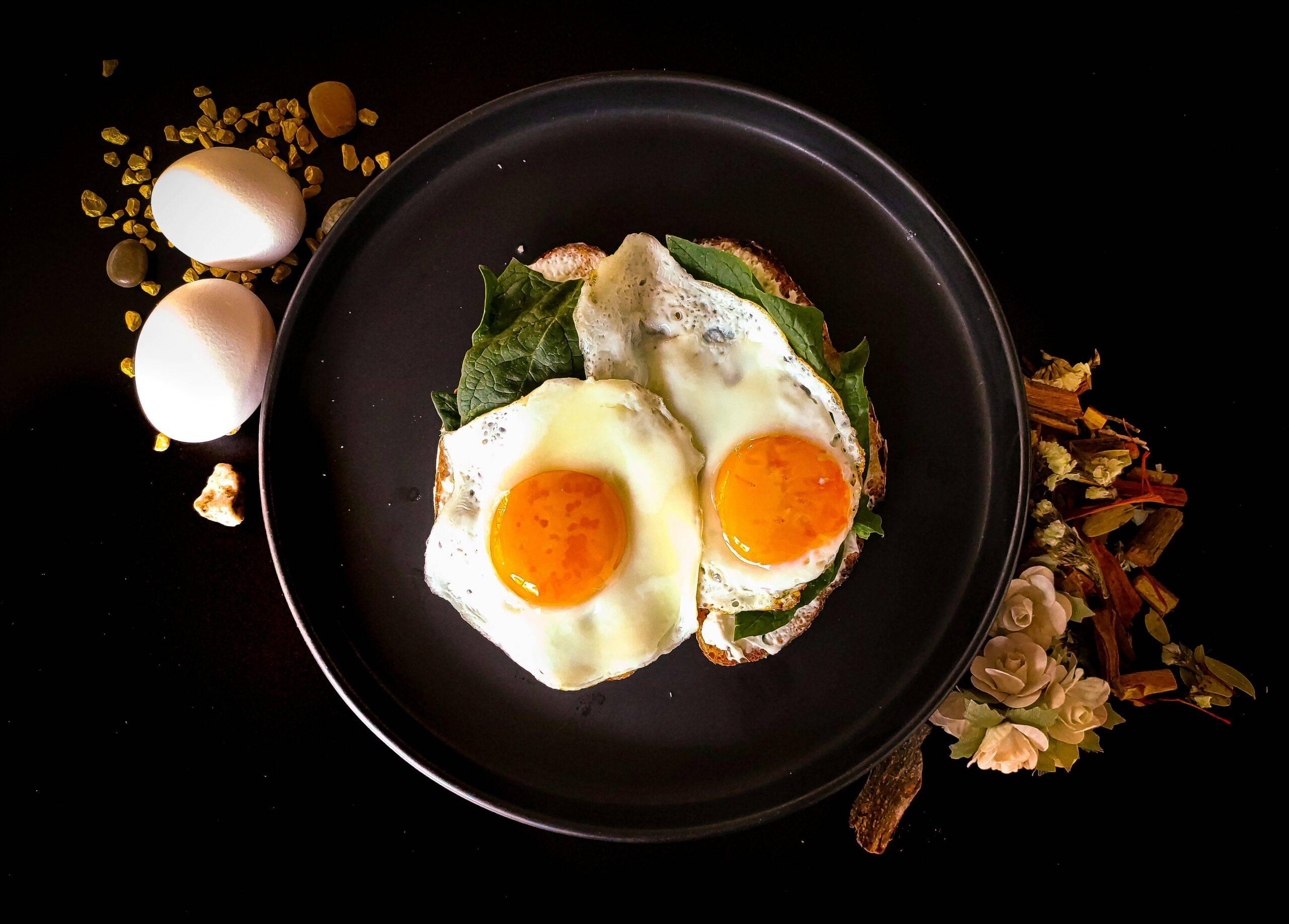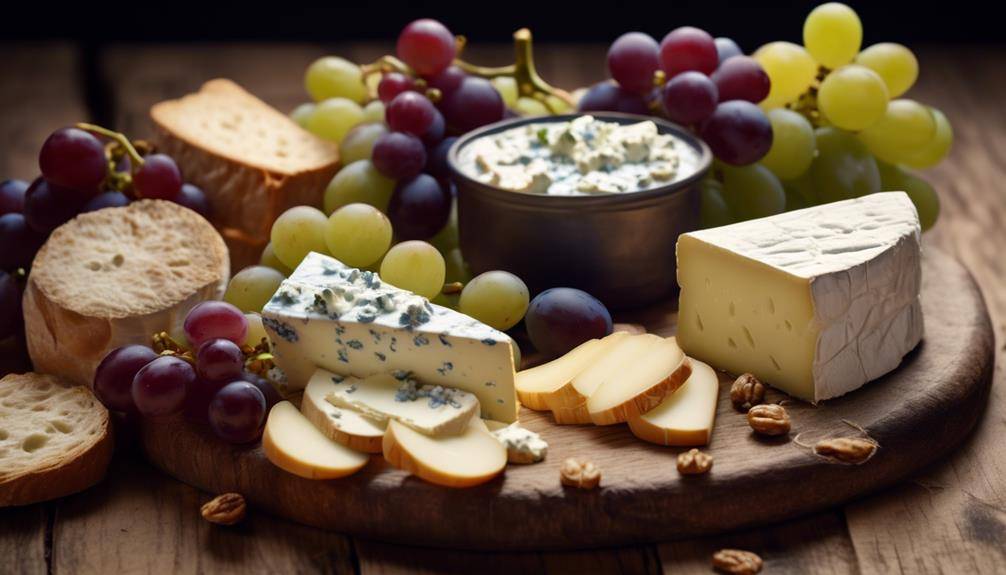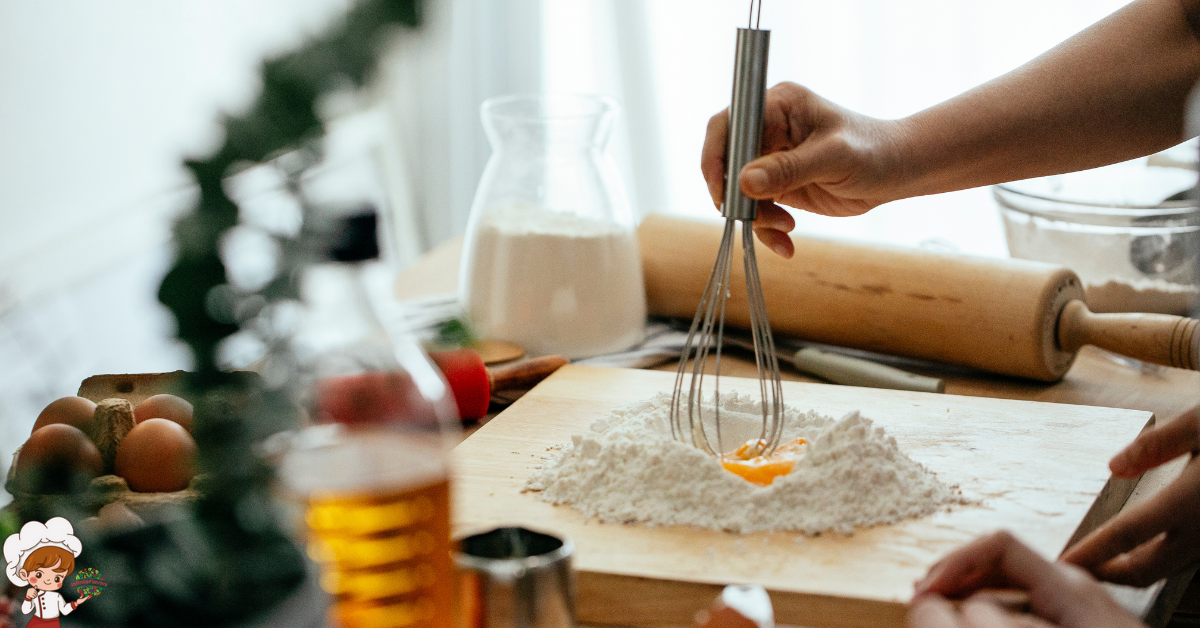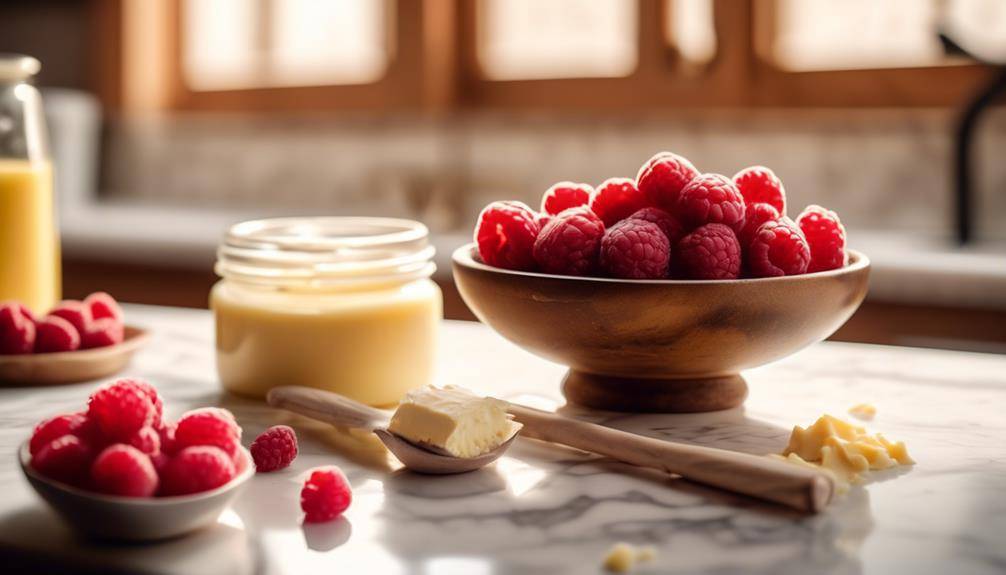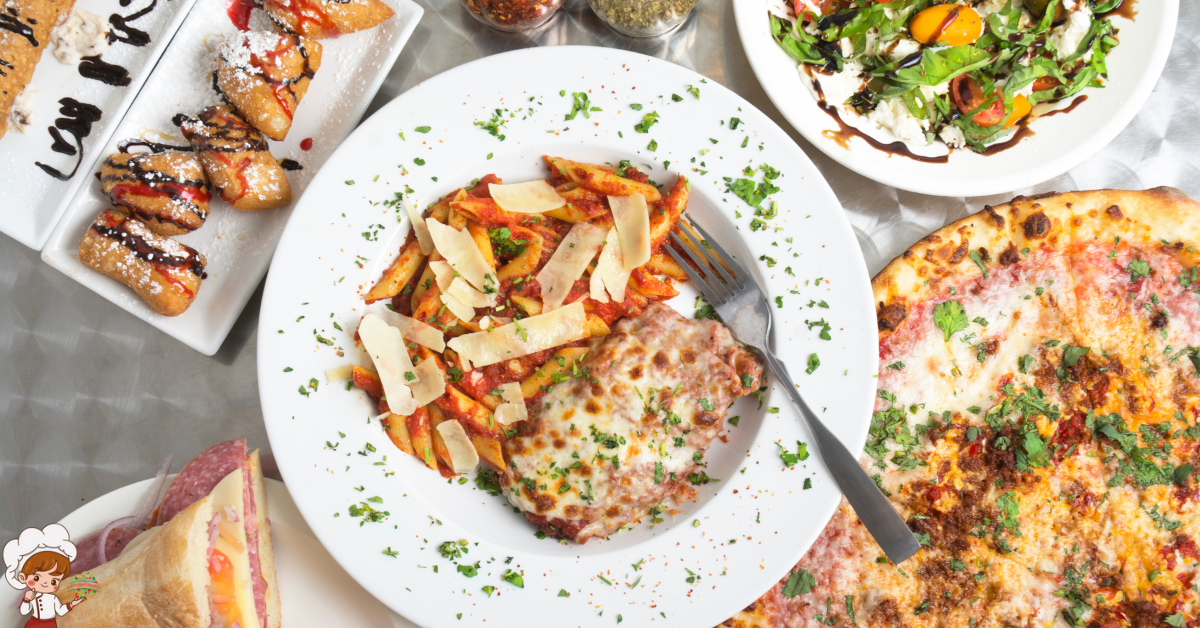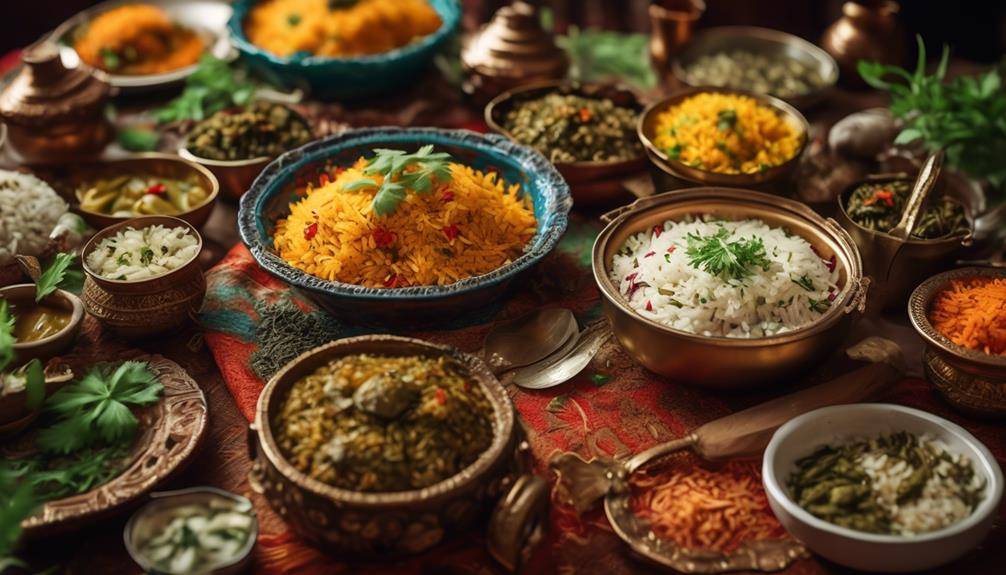Reasons Why Start With Basic Cooking Techniques
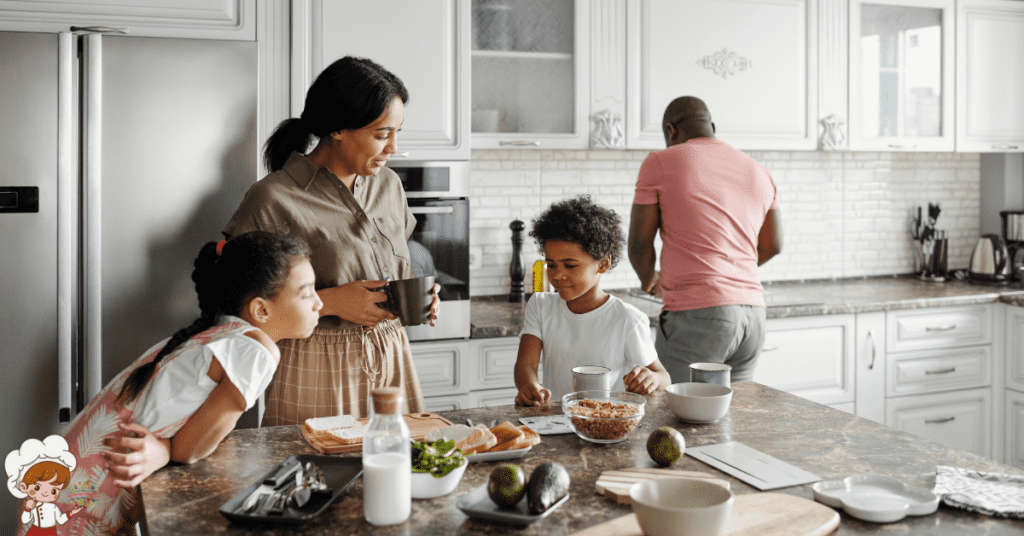
Why Start With Basic Cooking Techniques; Are you ready to take your cooking skills to the next level? Starting with basic cooking techniques is the key to becoming a confident and skilled home cook. Why start with the basics, you may ask? Well, it’s simple. By mastering fundamental techniques like knife skills, sautéing, roasting, braising, and baking, you will have a solid culinary foundation to build upon. These techniques are the building blocks that will allow you to create delicious, flavorful dishes with ease. Plus, understanding the art of seasoning and spices will help you develop your palate and take your flavors to new heights. So, let’s dive in and explore the world of basic cooking techniques together!
Building a Strong Culinary Foundation
By mastering basic cooking techniques, you can lay a solid foundation for your culinary skills. Building a strong culinary foundation is essential for any aspiring chef or home cook. It not only allows you to create delicious meals but also builds confidence in the kitchen.
When you have a strong understanding of basic cooking techniques, you gain the ability to tackle more complex recipes with ease. Whether it’s sautéing, roasting, or grilling, these foundational skills form the backbone of cooking. By practicing and perfecting these techniques, you develop a sense of mastery and control over your ingredients, resulting in consistently flavorful and well-cooked dishes.
Building confidence is an important aspect of becoming a skilled cook. As you become more comfortable with basic cooking techniques, you’ll find yourself experimenting with different flavors, textures, and ingredients. This confidence allows you to step outside your comfort zone and try new recipes or create your own unique dishes. It also helps you handle unexpected challenges in the kitchen, such as adjusting cooking times or substituting ingredients.
Moreover, mastering basic cooking techniques provides a strong foundation for understanding and appreciating the art of cooking. When you have a solid grasp of the basics, you can begin to explore advanced culinary concepts, such as flavor pairing, food presentation, and recipe development. This knowledge opens up a world of possibilities and allows you to express your creativity in the kitchen.
Gaining Confidence in the Kitchen
To gain confidence in the kitchen, it’s important to build upon the strong foundation of basic cooking techniques. By mastering these foundational skills, you will not only become more proficient in the kitchen, but you will also gain the confidence to experiment and create your own culinary masterpieces. Here are four reasons why building a strong foundation is crucial in gaining confidence in the kitchen:
- Knowledge breeds confidence: When you have a solid understanding of basic cooking techniques, such as sautéing, roasting, and braising, you can approach any recipe with confidence. You’ll know how to properly cook ingredients and make adjustments along the way, ensuring delicious results every time.
- Versatility in the kitchen: With a strong foundation, you’ll be able to adapt recipes to suit your taste and dietary needs. You’ll have the confidence to substitute ingredients, adjust cooking times, and experiment with different flavors, all while knowing the fundamental principles of cooking.
- Problem-solving skills: Cooking is not always smooth sailing. However, with a solid foundation, you’ll have the tools to troubleshoot and overcome any challenges that may arise. Whether it’s rescuing an overcooked dish or fixing a seasoning mishap, your confidence in the kitchen will allow you to think on your feet and find solutions.
- Creativity and exploration: Once you have a strong foundation in basic cooking techniques, you’ll have the freedom to explore new cuisines, try unfamiliar ingredients, and create your own unique dishes. With each successful experiment, your confidence will grow, pushing you to further expand your culinary horizons.
Mastering Essential Knife Skills
How can you improve your cooking skills and efficiency in the kitchen? One way is by mastering essential knife skills. Knife skills are fundamental to cooking and can greatly enhance your culinary experience. Not only will you be able to slice, dice, and chop with precision, but you will also ensure safety in the kitchen and prolong the life of your knives through proper maintenance.
Knife safety is of utmost importance when working with sharp blades. Always hold the knife by the handle and keep your fingers curled under to avoid accidental cuts. Use a cutting board that is stable and secure, preventing it from slipping during use. When cutting, make sure to concentrate on the task at hand and avoid distractions. And remember, never try to catch a falling knife – let it drop and then safely pick it up.
Proper knife maintenance is also key to maximizing their lifespan and performance. Keep your knives clean and dry to prevent rusting. Hand wash them with mild soap and warm water, avoiding abrasive materials that can damage the blade. Regularly sharpen your knives to maintain their sharpness, using either a sharpening stone or honing steel. Additionally, store your knives in a knife block or on a magnetic strip to protect the blades and prevent accidents.
Enhancing Flavor Through Proper Sautéing
Improve your cooking skills and efficiency in the kitchen by learning how to enhance flavor through proper sautéing. Proper heat control and essential sautéing techniques are key to creating delicious and flavorful dishes. Here are four important tips to help you master the art of sautéing:
- Heat the pan correctly: Before adding any ingredients, make sure your pan is hot enough. Heat it over medium-high heat and wait until it is evenly heated. This will ensure that your food cooks quickly and evenly, while also developing a beautiful caramelization and enhancing the flavor.
- Use the right oil: Choose an oil with a high smoke point, such as canola or vegetable oil, for sautéing. This will prevent the oil from burning and imparting a bitter taste to your food. Additionally, using a flavored oil, like garlic-infused oil, can add an extra layer of flavor to your dishes.
- Sauté in small batches: Overcrowding the pan can lead to steaming instead of sautéing. To achieve that perfect golden-brown color and caramelization, sauté your ingredients in small batches. This way, they have enough space to cook evenly and develop a rich flavor.
- Don’t forget to season: Seasoning your food is crucial to enhancing its flavor. Add salt and pepper to your sautéed ingredients as you cook them. This will help bring out the natural flavors and make your dishes taste more delicious.
Unlocking The Secrets of Roasting
Ready to unlock the secrets of roasting? Get ready to elevate your cooking skills to new heights as we explore the perfect roast chicken, the incredible flavors that come from roasting, and why roasting is a superior method compared to other cooking techniques. From achieving a crispy golden skin to infusing your ingredients with rich, caramelized flavors, roasting is a game-changer in the kitchen. So, grab your roasting pan and let’s get started on this flavorful culinary adventure.
Perfect Roast Chicken
To achieve the perfect roast chicken, start by preheating the oven to 425 degrees Fahrenheit. Follow these steps to unlock the secrets of roasting and create a dish that is bursting with flavor and texture:
- Season generously: Rub the chicken with a mixture of salt, pepper, and your favorite herbs and spices. This will enhance the flavor and create a delicious crust.
- Truss the bird: Tying the legs together and tucking the wings under the body will help the chicken cook evenly and retain its shape.
- Roast on a rack: Placing the chicken on a wire rack allows hot air to circulate around it, resulting in juicy tenderness and crispy skin.
- Use a meat thermometer: Insert the thermometer into the thickest part of the thigh, making sure not to touch the bone. The chicken is done when the internal temperature reaches 165 degrees Fahrenheit.
Flavors of Roasting
To achieve the flavors of roasting, start by understanding the key techniques and methods that unlock the secrets of this delicious cooking method. Roasting is a versatile cooking technique that can be used with a variety of ingredients, from meats to vegetables. The technique involves cooking food in an oven at high heat, resulting in a crispy exterior and tender interior. One of the most important techniques in roasting is searing the food before placing it in the oven. This helps to seal in the juices and enhance the flavors.
Another technique is basting, which involves brushing the food with a flavorful liquid, such as marinade or pan drippings, to keep it moist and add additional layers of flavor. By mastering these techniques, you can unlock the true potential of roasting and create dishes that are bursting with delicious flavors.
Roasting Vs. Other Methods
To fully appreciate the versatility and flavors of roasting, it’s important to compare this cooking method with other techniques. Here’s a list of four key points to consider when comparing roasting with alternative cooking methods:
- Retention of flavors: Roasting allows the natural flavors of the ingredients to shine through, as it caramelizes the surface and creates a delicious crust while retaining moisture within.
- Versatility: Roasting can be used for a wide variety of ingredients, from vegetables and meats to fruits and nuts, making it a versatile cooking technique.
- Even cooking: Unlike other methods like frying or grilling, roasting ensures even cooking throughout the ingredient, resulting in a perfectly cooked dish.
- Health benefits: Roasting requires little to no added fats, making it a healthier alternative to methods like frying or sautéing.
Exploring the Versatility of Boiling and Simmering
Are you ready to uncover the secrets of boiling and simmering? These two cooking techniques may seem simple, but they hold immense versatility in the kitchen. Understanding the differences between boiling and simmering will help you achieve the perfect texture and flavor in your dishes. Additionally, boiling offers the benefits of quick cooking and preserving nutrients, while simmering allows for tenderizing and infusing flavors. Get ready to explore the endless creative possibilities that boiling and simmering bring to your culinary repertoire.
Boiling Vs. Simmering: Differences
When boiling or simmering, you can achieve different results by adjusting the intensity of the heat. Here’s a breakdown of the key differences between boiling and simmering:
- Temperature: Boiling involves using high heat to bring a liquid to its boiling point, typically around 212°F (100°C). Simmering, on the other hand, uses lower heat, maintaining a temperature just below the boiling point, usually around 180°F (82°C).
- Agitation: Boiling creates rapid bubbles and a vigorous movement in the liquid, which is ideal for cooking pasta or blanching vegetables. Simmering, on the contrary, produces gentle bubbles and a slow, steady motion, making it perfect for slowly cooking stews, soups, or delicate ingredients.
- Cooking Time: Boiling is a quicker cooking method that is suitable for foods that require less time to cook. Simmering, being a slower process, is best for allowing flavors to develop and tenderizing tougher cuts of meat.
- Texture: Boiling can result in food that is soft and fully cooked. Simmering, on the other hand, can yield food with a more delicate texture, as it cooks more gently and slowly.
Understanding the differences between boiling and simmering techniques allows you to choose the right method for your recipe, ensuring the best results in your culinary endeavors.
Benefits of Boiling
By understanding the differences between boiling and simmering, you can now explore the versatility of boiling and simmering techniques. Boiling, a cooking technique that involves immersing food in boiling water, offers several health benefits. Firstly, it helps retain the nutrients in the food, as they are not lost in the cooking water. Secondly, boiling can help reduce the fat content in certain foods, as it allows the fat to be released and float to the surface.
Additionally, boiling is a great way to tenderize tougher cuts of meat, making them more palatable and easier to digest. Simmering, on the other hand, is a gentler version of boiling that is ideal for delicate foods like vegetables and fruits. By mastering these cooking techniques, you can unlock a world of flavorful and nutritious dishes.
Creative Uses of Simmering
To further expand your culinary skills, let’s delve into the creative uses of simmering, which build upon the versatility of boiling and simmering techniques discussed earlier. Simmering is not just about gently cooking ingredients in liquid; it can also be a tool for infusing flavors and creating unique dishes. Here are four ways to unleash your creativity in simmering:
- Flavorful broths: Simmering bones, vegetables, and aromatics for hours can produce rich and savory broths that form the base of many soups, stews, and sauces.
- Poaching perfection: Simmering delicate ingredients like eggs, fish, or chicken in flavorful liquids can result in tender, moist, and perfectly cooked dishes.
- Infused syrups: Simmer fruits, herbs, and spices in a simple syrup to create deliciously flavored syrups for cocktails, desserts, or drizzling over pancakes.
- Simmered grains: Cooking grains like rice, quinoa, or barley in simmering liquid can add depth and enhance their natural flavors, making them more satisfying and versatile in various dishes.
Embrace the creativity of simmering and explore the endless possibilities of unique simmering recipes.
Understanding the Art of Braising and Stewing
Mastering the technique of braising and stewing will elevate your culinary skills to new heights. These slow cooking methods are essential in creating flavorful and tender dishes that will impress your family and friends. By understanding the art of braising and stewing, you will be able to unlock a world of delicious possibilities in your kitchen.
Braising is a cooking technique that involves browning food in fat and then simmering it in a small amount of liquid. This slow cooking method allows the flavors to meld together, resulting in a rich and succulent dish. Whether you are braising a tough cut of meat or vegetables, the key is to cook them low and slow, allowing the flavors to develop and the texture to become tender.
Stewing, on the other hand, involves cooking food in a liquid for an extended period of time. This method is perfect for tougher cuts of meat, as it breaks down the collagen and connective tissues, resulting in melt-in-your-mouth goodness. Stews are often made with a combination of meat, vegetables, and aromatic herbs and spices, creating a hearty and comforting meal.
To braise or stew successfully, it is important to choose the right ingredients and seasonings. The key is to sear the meat or vegetables to develop a deep, caramelized flavor before adding the liquid. This step adds complexity and richness to the final dish. Additionally, using a low and slow cooking method ensures that the flavors have time to meld together and the proteins break down properly.
Perfecting the Basics of Baking and Grilling
Improve your culinary skills by mastering the basics of baking and grilling. These two cooking techniques are essential for any aspiring home cook or chef. Whether you’re baking a batch of cookies or grilling a juicy steak, understanding the fundamentals will elevate your dishes to the next level. Here are four key tips to perfecting your grilling techniques and mastering your baking skills:
- Temperature control: Whether you’re grilling or baking, maintaining the right temperature is crucial. Invest in a good quality thermometer to ensure your grill or oven is at the desired heat. For grilling, understanding the different heat zones is essential. Create a hot zone for searing and a cooler zone for indirect cooking. In baking, follow recipe instructions carefully and preheat your oven to the specified temperature.
- Timing is everything: Both baking and grilling require precise timing. Pay attention to cooking times and use a timer to avoid overcooking or undercooking your food. When grilling, keep an eye on the color and texture of your meat to gauge its doneness. In baking, use toothpicks or a cake tester to check if your cakes or breads are cooked through.
- Proper seasoning: Enhance the flavors of your dishes by properly seasoning your ingredients. For grilling, marinate your meats or vegetables in advance to infuse them with flavor. When baking, use the right amount of salt, sugar, spices, and extracts to bring out the best in your baked goods.
- Practice and experimentation: The more you grill and bake, the better you’ll become. Don’t be afraid to try new recipes and techniques. Keep a record of your successes and failures to learn from them. With practice, you’ll gain confidence and develop your own unique style in the kitchen.
Developing Your Palate With Seasoning and Spices
Enhance your culinary repertoire by exploring the realm of seasoning and spices, taking your understanding of basic cooking techniques to new heights. Developing your palate with seasoning and spices is an essential step in becoming a skilled cook. By mastering the art of flavor profiles and experimenting with herbs, you will be able to transform ordinary dishes into extraordinary culinary creations.
When it comes to developing flavor profiles, it is important to understand the role that seasoning and spices play in enhancing the taste of a dish. Seasoning refers to the process of adding salt and pepper to enhance the natural flavors of the ingredients. On the other hand, spices are derived from plants and are used to add depth, complexity, and a distinct flavor to a dish. By learning how to balance these flavors, you will be able to create well-rounded and delicious meals.
Experimenting with herbs is another exciting way to develop your palate. Herbs have the power to elevate the taste of a dish by adding freshness and vibrancy. From classic herbs like basil, thyme, and rosemary to more exotic ones like lemongrass and cilantro, the possibilities are endless. By incorporating herbs into your cooking, you can infuse your dishes with unique flavors and aromas.
To truly master the art of seasoning and spices, it is important to start with the basics. Begin by familiarizing yourself with common seasonings and spices and understanding their flavor profiles. Experiment with different combinations to see how they complement each other and enhance the taste of your dishes. As you gain confidence and expertise, you can start exploring more complex flavors and experimenting with unconventional pairings.
Expanding Your Repertoire With Basic Cooking Techniques
Now that you have mastered the basics of cooking techniques, it’s time to take your culinary skills to the next level. By expanding your repertoire with basic cooking techniques, you can enhance your abilities in the kitchen and explore a wider range of flavors and dishes. Whether it’s learning to sear a steak to perfection or mastering the art of making homemade pasta, these skills will open up a world of possibilities and allow you to impress your friends and family with your newfound culinary prowess. So let’s dive in and start exploring the exciting world of advanced cooking techniques!
Enhancing Culinary Skills
To expand your culinary skills, start by incorporating basic cooking techniques into your repertoire. These techniques are the building blocks of cooking and will serve as a strong foundation for your culinary journey. Here are four ways in which honing your skills in basic cooking techniques can enhance your culinary expertise:
- Mastering knife skills: By learning proper knife techniques, you will be able to chop, dice, and slice ingredients with precision and efficiency. This will not only make your cooking process more enjoyable but also improve the overall taste and presentation of your dishes.
- Understanding flavor profiles: Basic cooking techniques help you understand how different cooking methods can enhance or alter the flavors of ingredients. With this knowledge, you can experiment with various combinations to create unique and delicious dishes.
- Developing a sense of timing: Learning basic cooking techniques will teach you how to control heat, monitor cooking times, and ensure that your dishes are perfectly cooked. This skill is crucial in creating well-balanced and flavorful meals.
- Expanding your creativity: Gaining expertise in basic techniques allows you to have more confidence in the kitchen. With a solid foundation, you can easily experiment with new ingredients, flavors, and cooking styles, opening up a world of possibilities for your culinary creations.
Diversifying Cooking Abilities
Expand your cooking abilities by incorporating basic cooking techniques into your repertoire. Not only will this improve your technique, but it will also allow you to experiment with flavors and create a wide range of delicious dishes. By mastering basic techniques such as sautéing, roasting, and braising, you can elevate your cooking to a whole new level. Sautéing, for example, involves quickly cooking ingredients in a hot pan with a small amount of fat, resulting in a flavorful and crispy dish.
Roasting, on the other hand, allows you to achieve a caramelized exterior and tender interior, perfect for meats and vegetables alike. And with braising, you can transform tough cuts of meat into succulent and melt-in-your-mouth wonders. So go ahead, expand your cooking abilities and unlock a world of culinary possibilities.
Frequently Asked Questions: Why Start With Basic Cooking Techniques
How Long Does It Take to Build a Strong Culinary Foundation?
To build a strong culinary foundation, it takes time and practice. Cooking time varies depending on the individual, but with dedication and a focus on learning basic cooking techniques, you can develop your culinary expertise.
What Is the Most Important Skill to Gain Confidence in the Kitchen?
To gain confidence in the kitchen, start by mastering basic cooking techniques. Building knife skills and learning how to make basic sauces will give you a solid foundation and the ability to experiment with different flavors.
How Can I Prevent Food From Sticking to the Pan While Sautéing?
To prevent food from sticking to the pan while sautéing, make sure your pan is hot before adding the oil, use enough oil to coat the pan, and avoid overcrowding the pan. These simple techniques will help you achieve perfectly sautéed dishes every time.
What Are Some Alternative Methods of Roasting Besides the Traditional Oven Method?
To explore alternative methods of roasting, try grilling or smoking your food. You can also experiment with sous vide cooking, which involves vacuum-sealing your ingredients and cooking them in a water bath at a precise temperature.
How Can I Add Flavor to Boiling and Simmering Dishes Without Using Excessive Salt?
To add flavor to boiling and simmering dishes without excessive salt, it’s important to use herbs and spices. By experimenting with different combinations, you can create depth of flavor without relying solely on salt.
Conclusion
Mastering basic cooking techniques is the key to becoming a confident and skilled cook. By building a strong culinary foundation, you can unlock a world of flavors and create delicious meals with ease. Whether it’s mastering knife skills, sautéing, roasting, or baking, each technique adds depth and complexity to your dishes. With practice and experimentation, you’ll develop your palate and expand your repertoire. So, start with the basics and watch your cooking skills soar to new heights. Happy cooking!



